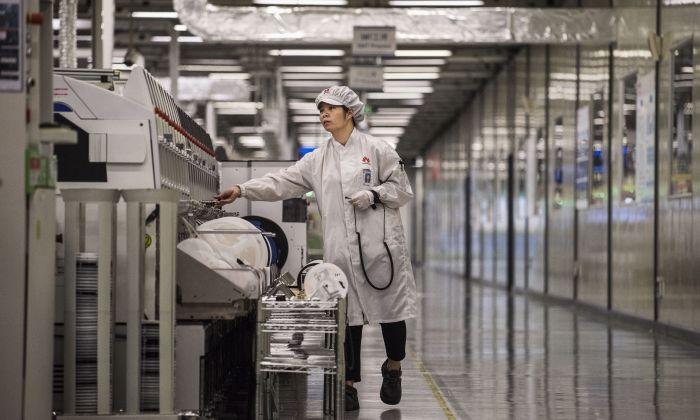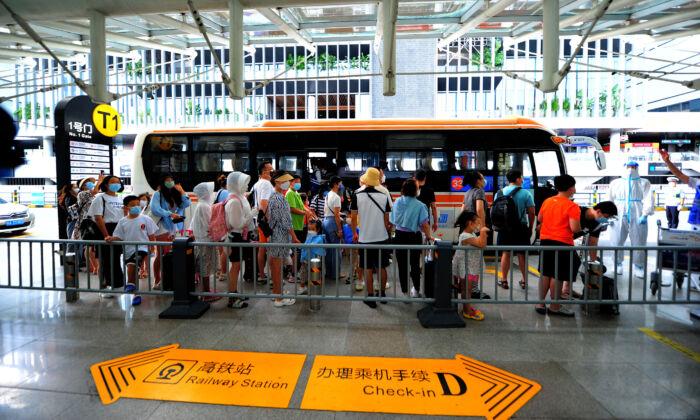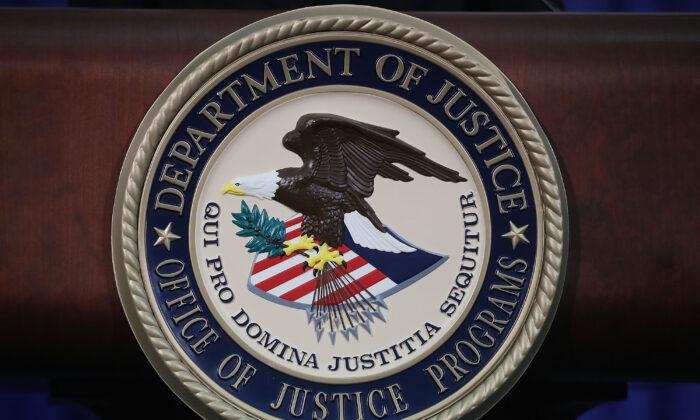Chinese authorities are preparing to release a “National Technology Security Management List” that would ban Chinese technology from being exported to foreign countries, Chinese state media reported on June 8.
The action comes after the United States enacted an export ban on Chinese tech giant Huawei in May, forbidding it from doing business with U.S. firms because of national security concerns.
In recent weeks, following a breakdown in trade talks in early May, trade tensions have ratcheted up, with Chinese official statements and state media consistently blaming the United States for the lack of negotiations. Some hawkish commentaries have called for the country to outright discontinue doing business with the United States.
New Regulation
China’s official government website reposted a June 8 report by the state-run media Xinhua about the plans for China’s National Development and Reform Commission (NDRC), an agency in charge of the state’s economic planning, to lead a team from different state ministries to prepare a tech export controls list.The report said the list is focused on “preventing and resolving the risks to national security more efficiently” and will be released soon.
Soon after, Global Times, a newspaper published under the Chinese Communist Party’s (CCP) mouthpiece, People’s Daily, ran an editorial that confirmed the retaliatory nature of Beijing’s new proposal.
The commentary said the list will ban Chinese technology from being exported to the United States, guiding Chinese “to sanction the United States for restricting Chinese high-tech companies by banning technology exports and supplies.”
The Global Times went on to compare what kinds of technology China had that the United States didn’t possess, mentioning that the Chinese had the technology to process rare-earth materials.
“China is the largest manufacturing base in the world. China has innovated and mastered many practical technologies,” the editorial stated.
As for what kind of companies the Chinese regime would add to the new list, the editorial made this insinuation: “Foreign companies that practically hurt the safety of Chinese high-tech companies and China’s national security.”
The mention of high-tech and national security harkens to the U.S. export ban on Huawei.
The editorial also suggested that regulations pertaining to the export controls could be interpreted broadly, according to the Chinese regime’s interests: “All laws and regulations have vague spaces, which allow the country’s judicial machinery to take action selectively.”
CCP’s Threats
The export control list also came soon after media reports revealed that the NDRC organized meetings with foreign companies for a sit-down.Hours before the Chinese authorities’ announcement, The New York Times published a report that quoted two people familiar with the threats as saying that the NDRC had convened meetings on June 3 and 4 with foreign companies that export technology goods to China, including Microsoft and Dell from the United States; semiconductor chip designer ARM from the United Kingdom; and Samsung and SK Hynix from South Korea.
The Chinese officials told the companies “they could face dire consequences if they cooperate with the Trump administration’s ban on sales of key American technology to Chinese companies,” the New York Times reported.
CCP’s Motivation
Despite the apparent threats from China, U.S.-based China affairs commentator Tang Jingyuan believed that such actions would backfire.“In fact, the Chinese regime’s actions are pushing the foreign companies to move out of China, which is what U.S. President Donald Trump wants,” Tang told The Epoch Times on June 9. Trump has expressed in Twitter posts and public statements that if U.S. companies wish to avoid tariffs on China-manufactured goods, they could simply move production back to the United States.
Tang said that while the Chinese regime would face dire consequences if Western companies left China, it is making threatening moves toward Western companies because it is “fighting in a lose-lose mode with the United States, which means if it can’t survive, it won’t allow the United States to live either.”
He also predicted the new export control list could prove inconvenient for some U.S. companies initially. “China doesn’t have advanced or core technology [that U.S. companies need] on hand, but it has some low-end technology in the supply chain. If it bans Chinese companies from supplying these services and products to the United States, some U.S. companies would have to find alternative solutions, which won’t be difficult but requires time and money,” Tang said.






Friends Read Free